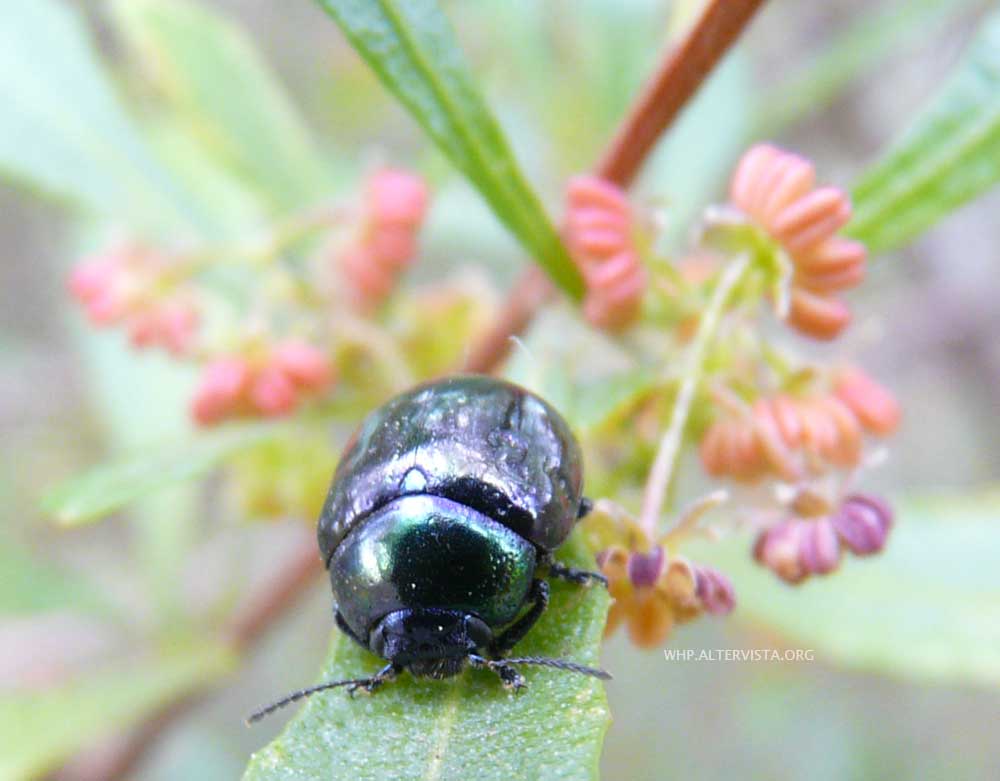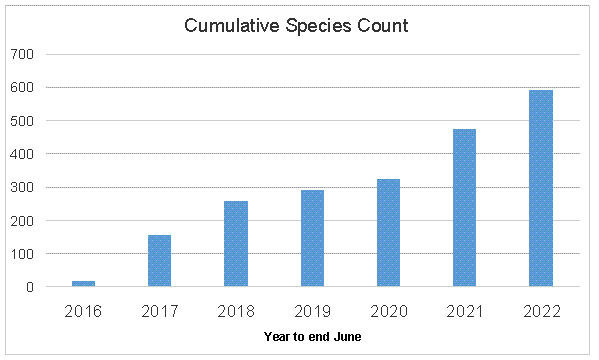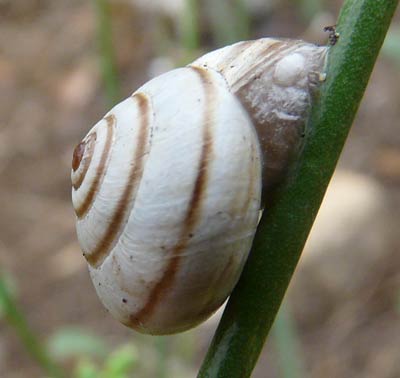Mammals, Reptiles, Amphibians and Fish
Birds
There are three main databases where birds seen (or heard) in the park have been recorded - the government's Victorian Biodiversity Atlas, Birdlife Australia's Birdata, and Ebird.com. All three have the most commonly seen species, but each also has records of species not found in the other two. For this reason I have extracted a list of birds species from the Atlas of Living Australia, which includes records from all three sources and a few others. Please see the help page for an explanation of the columns and how the list was extracted.
There are 184 native species and 12 alien (introduced) species in the list. Eighteen species are listed as threatened or near threatened at the state or national level. The only one of these consistently reported in the park in recent years is the Flame Robin. The park may be an important winter habitat for the species, which nests in the high country in summer. It was listed as vulnerable in NSW in 2010 due to an estimated 57% national decline in numbers over the 20 year period to 2002, thought to be due to degradation of both summer and winter habitats, particularly removal of dead trees and fallen timber in wintering areas. The same issues apply to other Robin species, with the Scarlet Robin listed as vulnerable in NSW and the Hooded Robin listed in both NSW and Victoria. The Hooded Robin did occur in the area but has not been recorded since 1946 (although the date has been entered into the database as 1846).
There would certainly have been other bird species in the area before the British invasion of Australia - the Emu being an obvious example. By sorting the list in order of date last seen (which you can do just by clicking on the column heading), we find other species we can be fairly certain have disappeared from the area - the Grey-crowned Babbler and the Olive Whistler have not been seen since 1931, and the Banded Lapwing since 1952. Another 9 species have not been seen since the 1990s. There are a very small number of records of these, but the intense coverage of the park by today's "birdos" would suggest they are no longer present.
There are also species which have generally become more common since invasion due to factors such as land clearing. These are indicated by a + in the conservation status column. Another group, the water birds, would be rarely seen in the park if not for the the presence of artificial water bodies.
If we sort the list by date first seen we find a number of species which, although perhaps present before invasion, have never recorded in the park until recent years. Because there are many more people looking for birds in the park than there used to be, species which have been seen a few times in recent years may have always been present occasionally or in low numbers and been overlooked. However there are some species seen much more commonly which have almost certainly moved back into the area since the park was formed, or at least become much more common - the White-browed Scrubwren was first recorded in 2017, the White-winged Chough in 2010, the New Holland Honeyeater in 2002, the Rainbow Lorikeet in 2000, and the Crested Pigeon in 1999. In some cases this is probably due to the increase in tree cover and leaf litter in the park, while in other cases it may be due to more widespread environmental changes.
Mammals, Reptiles and Amphibians and Fish

This list includes all vertebrate species other than birds which have been recorded in Woodlands Historic Park. Unlike the bird list, it also includes species known to have occurred in the area historically. Nine of the species are classed as threatened in Victoria, however 7 of these are locally extinct and probably have been for over a hundred years. The Eastern Barred Bandicoot is one of the latter since any reintroduced population has not been proven to be self sustaining.
Brush-tailed Phascogale
The threatened species which may still occur in the park are the Growling Grass Frog and the Brush-tailed Phascogale. While no Phascogales have been found in the park, one was seen on Sunbury Road south of the park in 2013, and a dead one was found on Oaklands Road in 2017. It is hard to believe that these came from anywhere other than the park or Melbourne Airport, since the next nearest area of their preferred habitat is in the Macedon ranges.
Phascogales prefer to forage on rough-barked eucalypts - box, iron-bark and stringy-bark. They also require suitable sized nest hollows throughout their range. There is at least 110 hectares of Grey Box forest at the eastern end of the back paddock, 6 hectares at the western end, at least 17 hectares in Weeroona Cemetery and Conservation zone, and another 110 hectares on Melbourne Airport land (all figures estimated from Google Earth). Smaller numbers of Grey Box and areas of Yellow Box occur elsewhere in the park. Robertson (page 59) calculated 70 old trees per hectare in the eastern back paddock, with a mean diameter of 76cm, although both figures are based on a very small sample.
van der Ree (2001) radio tracked 7 female Phascogales in Grey Box dominated woodland along roadsides near Euroa in northern Victora. They had an average home range of 5 hectares, which is the lowest home range (highest density) of any Phascogale population which has been studied. There were an average of 22 large (>70cm diameter) trees per hectare. Subject to a better assessment of tree density and number of hollows, the Grey Box areas in and around Woodlands Historic Park would appear to be even higher quality habitat, especially in the Back Paddock which is free of foxes and cats. The back paddock could potentially support a population of 23 or more females, with a similar number outside the back paddock (including the airport).
Unfortunately a targeted survey using infra-red cameras of the park and other areas commissioned by the City of Hume (van der Ree 2018) failed to find any Phascogales. 11 cameras were placed for 16 nights in the eastern end of the Back Paddock. Four of these were on the ground, two in dead trees, one in a Yellow Box, and four in Grey Box trees with diameters ranging from 86 to 124cm.
Cameras were also placed in the north-west corner of the park and along Providence Road, however there are no Grey Box in the former area and only a few smaller ones along Providence Road. The Melbourne Airport Grey Box woodland was not included in the survey.
Aquatic Species
There are no native aquatic species on the list. One native fish species, the Macquarie Perch, is recorded as occurring in the area of Woodlands Historic Park but this is only because some were released into the Sanatorium Dam in 1915. Given the unreliability of the dam as a water supply they would not have survived long.
The Atlas has only one fish species recorded anywhere in Moonee Ponds Creek, the Bull Head or Flathead Gudgeon (Philypnodon grandiceps) which was detected as far upstream as Westmeadows in 2005 and could possibly find its way further upstream when the creek is flowing. It is also possible that other native species such as the Spotted Galaxias occurred in Moonee Ponds Creek in the past.
Two other aquatic species have been recorded in the creek at Westmeadows, the Water Rat and the Eastern Snake-necked Turtle. These are only likely to have occurred further up the creek if there were some permanent water-holes.
Invertebrates
The overwhelming majority of the animal species in the world and in the park are invertebrates, such as earthworms, spiders and insects. There are estimated to be about 320,000 species in Australia, of which about 115,000 have been named (Chapman 2009). A breakdown of the numbers is given on the classification page. Invertebrates or their secretions comprise all or part of the diet of many other animals in the park, including the Eastern Barred Bandicoot and at least 91 native bird species. Many invertebrate species provide vital services like pollination or nutrient cycling.

How Many Invertebrate Species are there in Woodlands Historic Park?
There has been no scientific survey of invertebrates in the park that I am aware of apart from:
- A pitfall trapping survey by Dufty (1994). This was to assess food availability for the Eastern Barred Bandicoot, so it was concerned with the abundance of invertebrates rather than their detailed identification.
- A small targeted search which discovered a few Golden Sun Moths in Twin Dams Paddock.
The only other information we have is from photographs taken in the park by hobbyists (or if you want to be complementary, "Citizen Scientists"). Identification to species level from a photograph is only possible for the more distinctive species and often not even for those, but precise identification is not needed to count the species. There are some species that occur in various different colours or patterns, but not a significant proportion of the total. Much more common are species which look too similar to discriminate between them, which just means that the number of species we count will be less than the real number.

Two people have been taking photos of invertebrates in the park since the second half of 2016, and the number of species seen is at least 590 insects, 50 spiders, but only 9 other invertebrates. (Depending on when you look there may be photos of fewer or more species than this on the website.) As you can see from the graph the largest number of species were seen in the first year, but almost as many new species were seen in the latest year. The slope of the graph is not very significant since the amount of time spent searching is not known, but it does indicate that we can expect to see additional species in the future.
No matter how many visually distinct species we photograph, it will always be less than the number of species present. We mainly photograph species on foliage, stems or flowers of plants, or on the ground. Kangaroo carcasses and dung are another good place to look. We also count species which can be identified from their protective covering such as a scale, lerp or gall, even if the actual insect has not been seen. However we don't go digging through leaf litter or stripping bark, and we miss insects in flight. Nocturnal insects, such as most moths, are rarely seen during the day. It is hard to get a useful photo in the field of an insect smaller than about 3mm, which rules out a lot of species.
While a few species have been seen often, and some have been seen in large numbers but only over a few weeks of one year, there are many species where we have only ever seen one individual. This could indicate rarity, or just that the species is hard to observe. That fact that we are still finding a steady stream of new species after six years shows how inefficient this method of counting insect species is.
How far away are we from the true number of invertebrate species in the park? The huge number of species nationwide reflects the variety of habitats and climates that exist. One might expect that wetter environments might have a disproportionately large number of species, although for at least one group of insects (fungus feeding thrip in leaf litter) the opposite was found. How many species can we expect to find in a temperate woodland? Clues to the possible start of a guess are given by studies in woodland habitats elsewhere in Australia.
Yen and others (2002), collected invertebrates from two medium age River Red Gums in Moira State Forest (NSW), one in February and one in October. Two methods were used, looking under bark and collecting invertebrates which fell to the ground after the whole canopy was sprayed with insecticide. A total of at least 450 species were counted, with little overlap between the two seasons. The majority of species were bugs, flies, ants, wasps, spiders or beetles.
The trees were not flowering at the time of sampling so flower visitors would have been missed. Also excluded (unless the mobile adults happened to be present at the time) would be species which live inside the wood or leaves, gall forming insects, and scale and lerp insects (sap suckers which build a protective covering over themselves).
Another study looked at Narrow-leaved Ironbark and Grey Box trees in a New South Wales forest (Majer and others 2000). (Not the same Grey Box species as the one in the park.) Ten trees of each species were sprayed with insecticide four time in a year. Again the trees were not flowering at any of the sampling times (deliberately so). A total of 976 species were found, with 34% only on Ironbark, 26% only on Grey Box and 40% on both species of tree.
The only other relevant study I have found of invertebrate diversity in woodlands is a study by Robertson and others (1989) of ground dwelling invertebrates in River Red Gum and Black Box forests in Northern Victoria. They found about 200 species, of which only 52 were common between the two types of forest.
To find the total number of invertebrate species in an area it would be necessary to count the species living on all plants, not just the eucalypts, and in leaf litter, fallen timber, soil, plant roots and water. This would have to done at a number of different times of year. We cannot just add the number of species found by different sampling methods since many species would be double counted, for example ants which live on the ground but feed in the canopy. This means that either specimens have to be identified to species (which was not done in the above studies) or at least that specimens have to be compared with those found by different sampling methods. It seems that no such study has ever been done.
How Many Invertebrate Species have been lost?
Since many plant species have disappeared from Woodlands Historic Park, it is likely than many specialized invertebrate species have been wiped out as well. For example the Checkered Swallowtail butterfly, caterpillars of which feed only on the plant Tough Scurf-pea or Emu's Foot, listed as likely to have occurred in the park but now rare in the Melbourne area and endangered in Victoria.
On the other hand, some insect species are able to utilize weeds instead of the native plant species they lived on previously, and these insect species may be much more common than they would have been before European invasion. The most obvious example is the Horehound Bug.
Are Alien Invertebrate Species a problem?

In 1987 there were estimated to be more than 500 alien species of invertebrate in Australia (Thompson et. al. 1987), which is a relatively small proportion of the total number of species. While most alien species of plants and vertebrate animals in Australia have been deliberately introduced, most alien species of invertebrate have arrived by accident and are usually pests. Fortunately for the environment (but of no comfort to farmers and horticulturists) many of them are specific to introduced plants or animals. Deliberate invertebrate introductions include the European Honeybee, insects and mites introduced for the biological control of weeds or pest insects, and beetles which utilize livestock dung.
The number of alien invertebrate species in the park is as much a mystery as the total number of invertebrates. The table below lists those we know of. The "How Arrived" column indicates whether the species was accidentally or deliberately introduced into Australia. "Biocontrol" indicates a deliberate introduction as a biological control agent - these are the only species that can be considered beneficial to biodiversity. The European Honeybee and the Redlegged Earth Mite are strongly detrimental, and all the other accidental species are probably detrimental to some degree. By detrimental to biodiversity we mean biodiversity state-wide or nationally, not just in the park: several accidental species could be considered beneficial in the park even though they are detrimental overall. For example caterpillars of the Cabbage White butterfly feed only on plants in the Cabbage family, which in Woodlands Historic Park are all weeds. Elsewhere in the state there are native species in this family.
| Scientific Name | Common Name | How Arrived |
|---|---|---|
| Armadillidium vulgare | Common Pill Woodlouse | accident |
| Porcellio scaber | Common Slater | accident |
| Forficula auricularia | European earwig | accident |
| Pyrrhocoris apterus | European Firebug | accident |
| Apis mellifera | European Honeybee | deliberate |
| Vespula germanica | European Wasp | accident |
| Exapion ulicis | Gorse Seed Weevil | biocontrol |
| Tetranychus lintearius | Gorse Spider Mite | biocontrol |
| Chamaesphecia mysiniformis | Horehound Clear-wing Moth | biocontrol |
| Rhinocyllus conicus | Thistle Receptacle Weevil | biocontrol |
| Mogulones larvatus | Paterson's Curse Crown Weevil | biocontrol |
| Longitarsus echii | Paterson's Curse Taproot Flea Beetle | biocontrol |
| Ommatoiulus moreleti | Portuguese Millipede | accident |
| Halotydeus destructor | Redlegged Earth Mite | accident |
| Metopolophium dirhodum | Rose/Grass Aphid | accident |
| Prietocella barbara | Small Pointed Snail | accident |
| Urophora stylata | Spear Thistle Gall Fly | biocontrol |
| Chrysolina quadrigemina | St Johns Wort Leaf Beetle | biocontrol |
| Cernuella virgata | Vineyard Snail | accident |